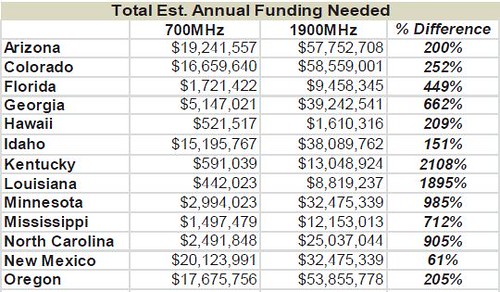The FCC may reserve up to a third of licenses sold in a TV airwaves auction next year for smaller wireless carriers – if a minimum revenue threshold is met – according to Re/Code. The 600 MHz plan allows all wireless carriers to bid for airwaves in an effort to drive up revenues from the sale.
According to Re/Code, the licenses would be mostly paired in 5 megahertz blocks. If bidding reaches a to-be-determined threshold price, the agency would set aside up to 30 percent of the licenses for companies that don’t currently hold a lot of nearby airwaves. Winners couldn’t immediately flip their licenses and sell them to the larger wireless carriers, sources said.
The proposal is said to represent an effort by Wheeler’s aides to meet two broad, conflicting goals of the auction: Raise as much money as possible (by selling licenses to wireless giants AT&T and Verizon) while increasing competition (by selling licenses to smaller carriers).
The FCC could vote on the plan and release details to the public as soon as mid-May, although some details may change in the coming weeks.
According to four people briefed on the plan, the agency would create two separate classes of licenses for sale in the TV airwaves auction next year, restricted and unrestricted.
Currently, the agency thinks it will have about 85 megahertz of airwaves from broadcasters in urban areas to auction off, sources said. There could be more licenses available in rural areas.
Under Wheeler’s plan, airwaves held by Sprint and Dish Network that were previously excluded from the “spectrum screen” would now be factored into the calculation. The new limits apparently wouldn’t be used to hinder carriers from acquiring spectrum in the TV airwaves auction next year, but would apply in the future.
The new spectrum calculation would make it easier for AT&T and Verizon to add to their spectrum holdings but could hinder Sprint, which controls a significant amount of 2.6 GHz airwaves that aren’t as valuable as their competitors.
In February, Sprint proposed the FCC adopt a “weighted wireless broadband spectrum screen” that would accord competitive advantages to spectrum under 1 GHz. It’s aimed at the duopoly which now dominates 700MHz and 800MHz spectrum ownership.
According to a study commissioned by T-Mobile, covering Arizona with 700 MHz LTE would cost $19 million, but it would cost $58 million to cover the same area with 1900 MHz. Only one-tenth the number of towers are required to provide coverage at 600 MHz compared to 2.6 GHz. That’s why 700 MHz can cost $1 Mhz/pop vs $.10 Mhz/pop for 2.6 GHz.
All in all, it sounds like a win for big carriers. In a perfect world, perhaps one third of that spectrum could have been set aside for unlicensed use, maybe in unpaired 5 MHz chunks, with a 10 MHz chunk available for municipalities to use as they will. But somebody’s got to pay for SafeNet, the nationalized first responder network.
This auction looks like it will easily top the $20 billion bonanza The Treasury received from the 2008 auction of the 700 MHz frequencies. Too bad half the money will go to pay off television group owners — who have never paid one dime to use the public airwaves and have never “owned” that spectrum.
See Dailywireless: The Duopoly’s Worst Nightmare, Arctic Technology, Wheeler Advocates for Spectrum Caps at 600MHz , 600 MHz Auction Speculation,
Posted on Tue, 15 Apr 2014 05:32:00 +0000 at http://www.dailywireless.org/2014/04/14/...ion-rules/
Comments: http://www.dailywireless.org/2014/04/14/.../#comments


